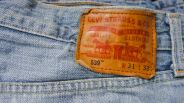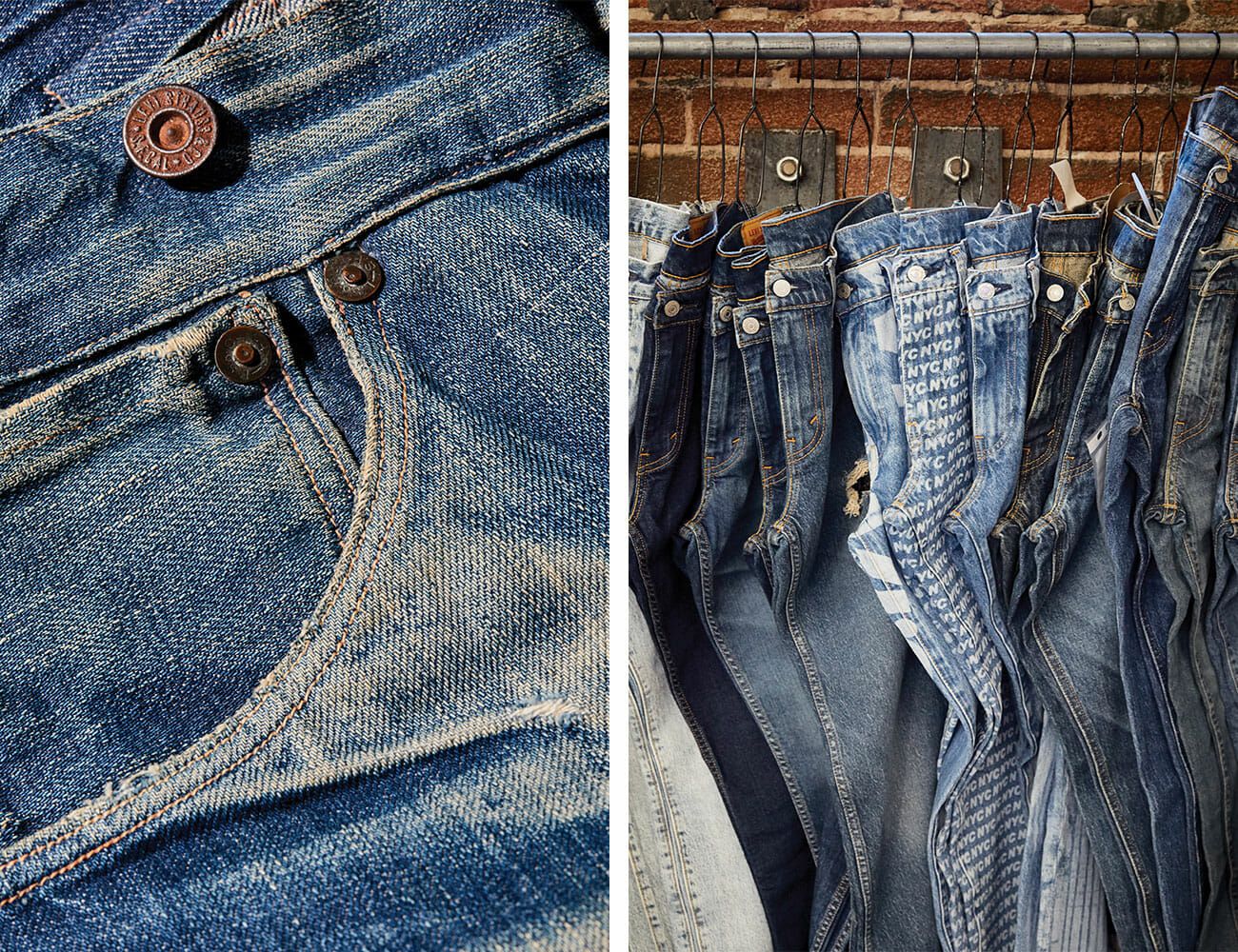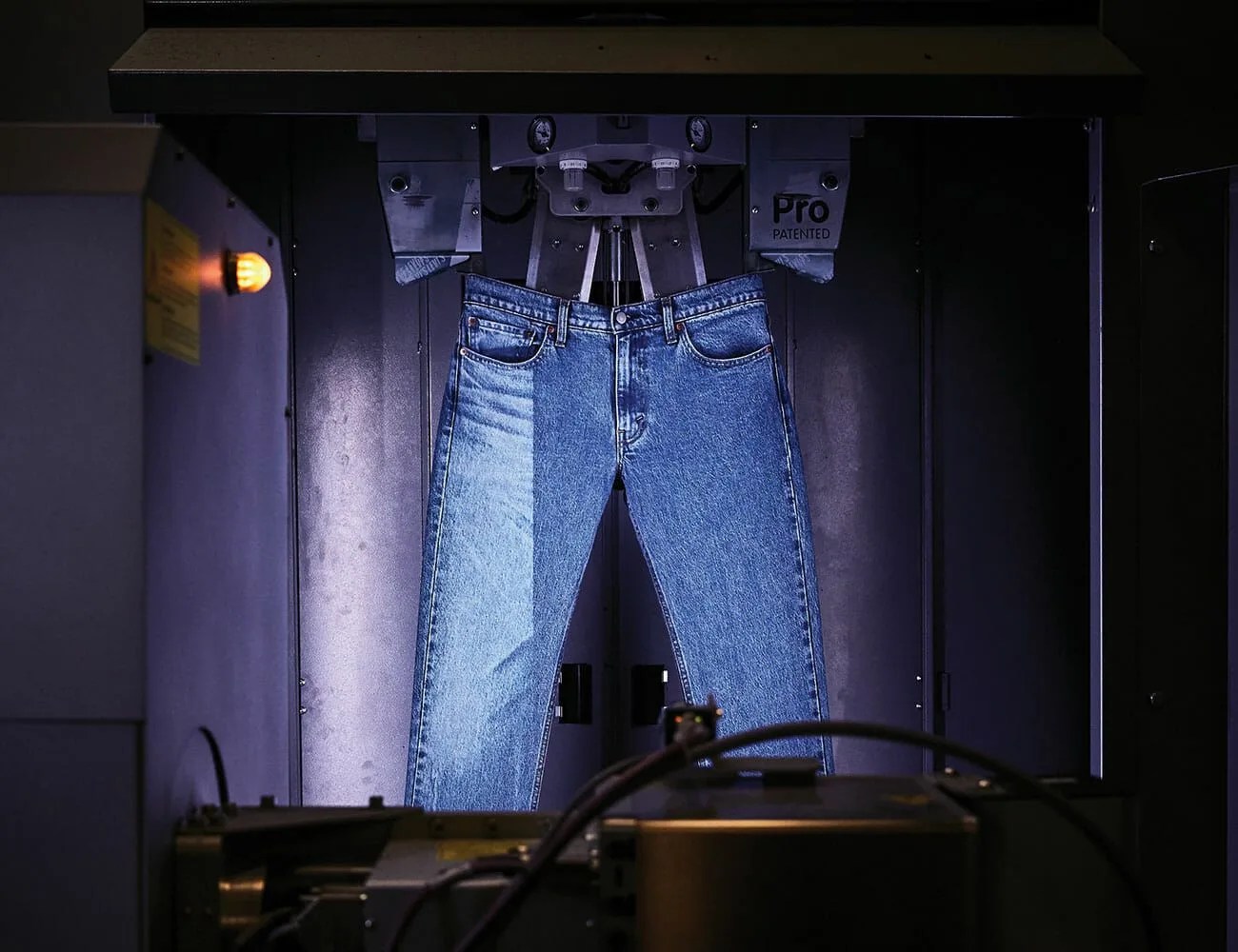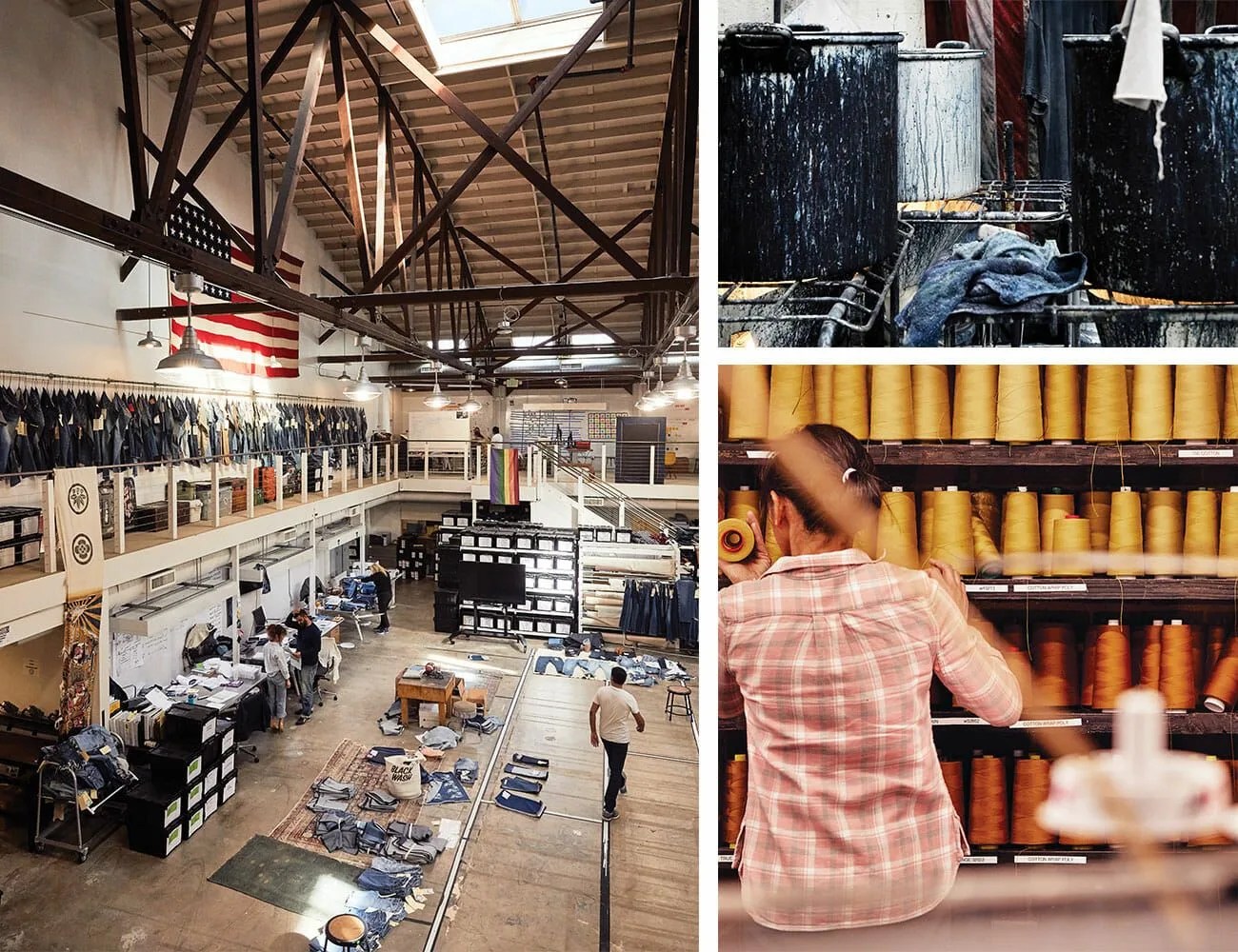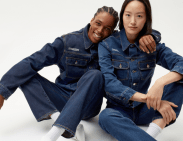A version of this article originally appeared in Issue Ten of Gear Patrol Magazine, published in 2019, with the headline “Wash. Fit. Rinse. Revolution.” Subscribe today.
“Do you know how to sew a button?” Paul Dillinger, Levi’s vice president of Global Product Innovation, asks me the question near a sewing machine on the second floor of Levi’s Eureka Innovation Lab in a nondescript warehouse in San Francisco’s Telegraph Hill neighborhood, just blocks from the company headquarters.
Before I can answer, Dillinger bounds down the stairs, out of sight, and soon returns with buttons, needles and thread. He grabs a pair of scissors and shears off a length of selvedge canvas in a single smooth movement before getting to work, sewing and lecturing simultaneously.
“In 1997, the state of California stopped teaching conventional home ec,” he says. Dillinger is tall and lanky in a denim jacket and black beanie, with sharp blue eyes and a dark, close-cropped beard. “Home ec and shop got turned into seven different vocational tracks, and now every school teaches all seven. But basic life skills aren’t part of it,” he says, threading his needle. Back when he lived in New York, Dillinger says, he gave similar button-sewing lessons to friends during weekly poker nights at his apartment.
Dillinger grew up in a small logging town in Washington state, near Mount Rainier. He decided to become a designer at just 12 years old after seeing a fashion segment on The Phil Donahue Show. He spent his teens teaching himself sewing and patternmaking, eventually receiving a BFA in fashion design from Washington University in St. Louis. For postgraduate work, Dillinger received the first-ever Fulbright scholarship for the study of fashion, in 1994, attending the Domus Academy in Milan. It was at there, under the tutelage of design luminaries like Anna Zegna, Philippe Starck and Andrea Branzi, where Dillinger absorbed the idea that every design decision should be validated by research, which remains a core tenet of his work.

